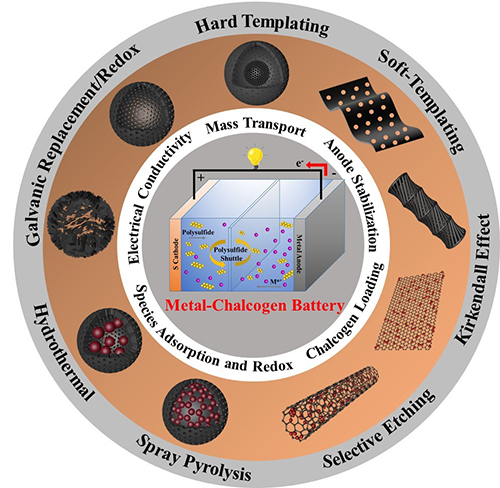Metal-chalcogen batteries (MCBs) are promising alternatives to the commonly used lithium-ion batteries due to their remarkable capacities as well as cheaper and more versatile electrodes.
Nevertheless, the rational design and controllable synthesis of electrode materials is still challenge.
Recently, Prof. LIU Jian's group and Prof. WU zhongshuai's group from the Dalian Institute of Chemical Physics (DICP) of the Chinese Academy of Sciences, in cooperation with Prof. LIANG Ji from Tianjin University, reviewed the application of nanoreactor for Metal-chalcogen batteries.
This work was published in Energy Environmental Science on Jan. 7.

Various nanoreactor designs for application as electrode material in MCBs and their most attractive functions (Image by Haodong Shi and Yash Boyjoo)
The essential functions of MCB electrodes include electrical conduction, cathode species encapsulation, intermediate species immobilization, cathode redox reaction acceleration and anode species stabilization.
Design of nanoreactors for MCBs has been proven as a highly feasible strategy for integrating some or all these features into an individual electrode material, to be used in these batteries.
"We introduced the concept and features of nanoreactors, and the major synthetic strategies for constructing nanoreactors with different morphologies and dimensions," said Prof. LIU.
Moreover, the researchers discussed the main functions of MCBs and how they could be imparted upon the electrode nanostructures via nanoreactor design and engineering. They also summarized the examples of typical nanoreactors for applications in MCBs and discussed the perspectives and future directions.
This study was supported Liaoning Natural Science Foundation, LiaoNing Revitalization Talents Program, Dalian National Laboratory for Clean Energy (DNL), and DNL Cooperation Fund. (Text by Haodong Shi)